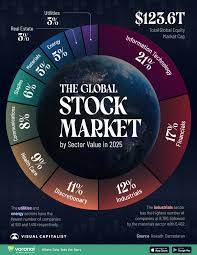Introduction: Why Investing Matters
Saving money is good, but investing is how wealth is built. While savings protect you in emergencies, investing helps your money grow faster than inflation and prepares you for long-term goals like buying a home, starting a business, or retiring comfortably.
In 2025, investing has become more accessible than ever before. With digital platforms, apps, and global financial tools, you don’t need to be a Wall Street expert to start. What you do need is knowledge, patience, and discipline.
This guide will take you step by step through everything a beginner should know about investing.
1. Understand the Basics of Investing
Before putting money anywhere, you must know what investing means.
👉 Investing = putting your money into assets that grow in value over time.
Unlike saving (which is safe but grows slowly), investing carries risk—but also greater rewards.
Common Investment Terms Beginners Should Know:
Stocks: Ownership shares in a company.
Bonds: Loans you give to companies/governments that pay interest.
Mutual Funds: A collection of stocks/bonds managed by professionals.
ETFs (Exchange-Traded Funds): Like mutual funds but traded on stock markets.
Commodities: Physical goods like gold, silver, oil.
Crypto & Digital Assets: Bitcoin, Ethereum, tokenized assets (high risk).
Real Estate: Property investment for rental income or appreciation.
2. Why Beginners Should Start Investing Early
The earlier you start, the more compound interest works in your favor.
Example:
If you invest $200 monthly at 10% annual return for 20 years = ~$137,000.
If you start 10 years later with the same $200 monthly = only ~$50,000.
💡 Lesson: Time in the market is more important than timing the market.
3. Steps to Start Investing as a Beginner
Step 1: Define Your Financial Goals
Ask yourself:
What am I investing for? (retirement, house, business, education, wealth-building)
How much time do I have? (short, medium, long-term)
What’s my risk tolerance? (can I handle losses in the short run?)
Step 2: Build an Emergency Fund First
Before investing, ensure you have 3–6 months of living expenses saved. This protects you from emergencies so you don’t pull money out of investments too soon.
Step 3: Learn About Risk and Diversification
Risk: Investments can go up and down.
Diversification: Spread money across different asset types so one loss doesn’t ruin everything.
Example: Don’t put all your money in crypto or a single stock. Mix stocks, bonds, and safer investments.
Step 4: Choose the Right Investment Account
In 2025, you can open an account with:
Traditional brokers (Fidelity, Vanguard, Charles Schwab).
Online apps (Robinhood, eToro, Bamboo, Risevest, Trove, Chaka).
Retirement accounts (401k, IRA, RSA in Nigeria, Pension Plans).
Step 5: Start Small and Automate
Begin with as little as $10–$50 monthly.
Use auto-invest features to put money in regularly.
Dollar-cost averaging = investing fixed amounts at regular intervals, reducing risk from market volatility.
4. Best Beginner-Friendly Investments in 2025
Index Funds & ETFs
Track entire markets (like S&P 500).
Low cost, low risk, stable long-term growth.
Great for beginners.
Mutual Funds
Managed by professionals.
Slightly higher fees but less effort for you.
Dividend Stocks
Companies that pay regular dividends.
Provide income + growth.
Government Bonds / Treasury Bills
Safer than stocks.
Lower returns, but good balance in a portfolio.
Real Estate Crowdfunding
Apps let you invest in real estate with small amounts.
Rental income + appreciation.
REITs (Real Estate Investment Trusts)
Like mutual funds but for real estate.
Pays dividends from rental properties.
Robo-Advisors
Platforms that automatically manage investments based on your goals.
Example: Betterment, Wealthfront, PiggyVest Investify.
5. Mistakes Beginners Should Avoid
Investing without research → Following hype or trends blindly.
Timing the market → Trying to guess highs/lows; often fails.
Investing money you can’t afford to lose → Always keep essentials safe.
Ignoring fees → High broker fees reduce your returns.
Not diversifying → Putting everything in one asset class.
6. Tips to Stay Consistent and Motivated
Automate investments: Set it and forget it.
Educate yourself regularly: Read finance blogs, books, and watch tutorials.
Join a community: Online forums or groups encourage learning.
Track your progress: Use apps to watch your investments grow.
Think long-term: Avoid panic-selling when markets drop.
7. The Future of Investing in 2025 and Beyond
AI-powered investing: Algorithms are shaping portfolio management.
Green & sustainable investing: ESG (Environmental, Social, Governance) funds are growing.
Fractional investing: Buy part of a stock (like half of Amazon’s share).
Crypto regulation: Digital assets may become more stable as governments regulate them.
Global access: Anyone with a smartphone can invest in international markets.
Conclusion
Starting your investing journey as a beginner in 2025 may seem overwhelming, but it’s never been easier. The key is to start small, stay consistent, diversify, and think long-term.
Remember, wealth isn’t built overnight—it’s built through patience and discipline. The sooner you begin, the sooner you put your money to work for you.
👉 Don’t just save money. Invest it. Grow it. Secure your future.



